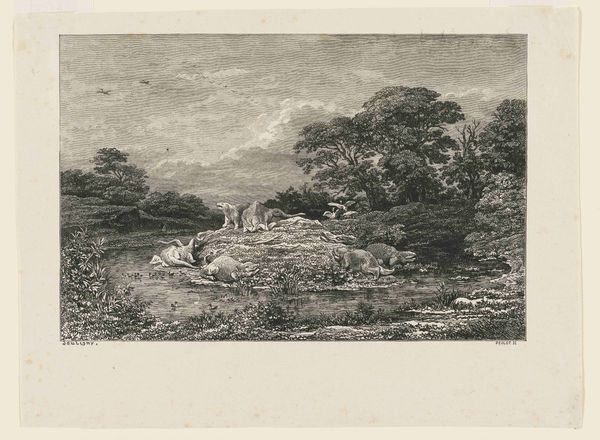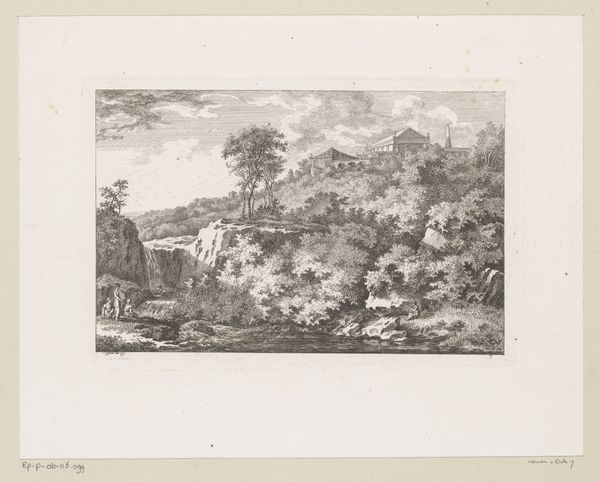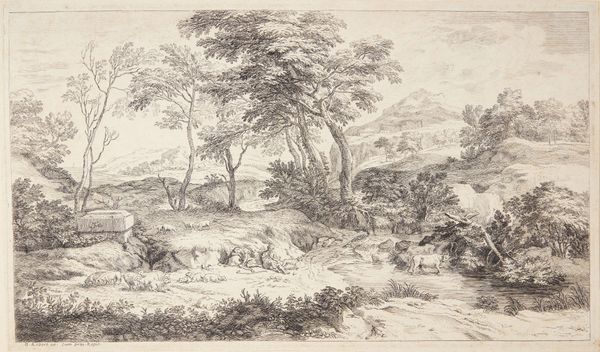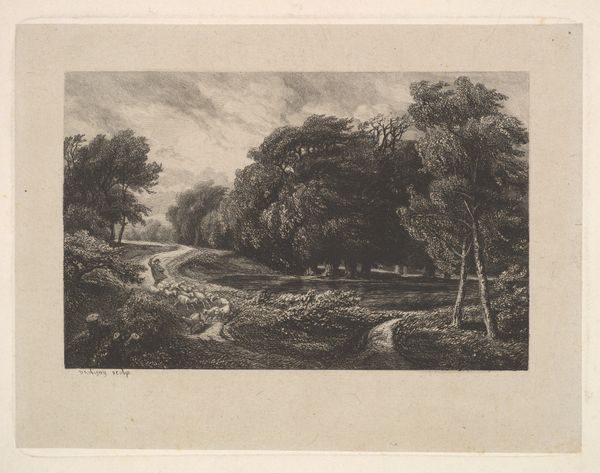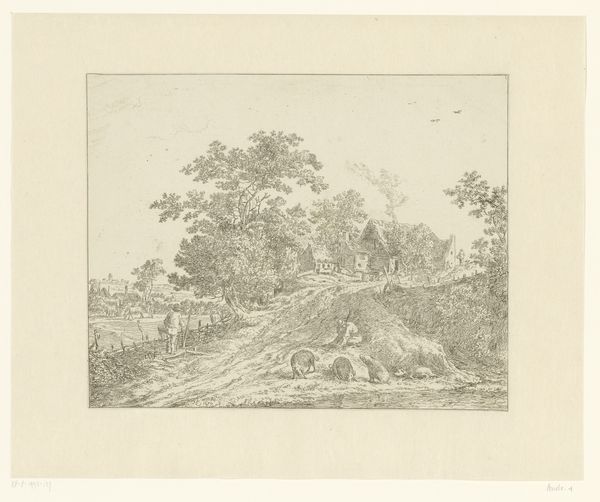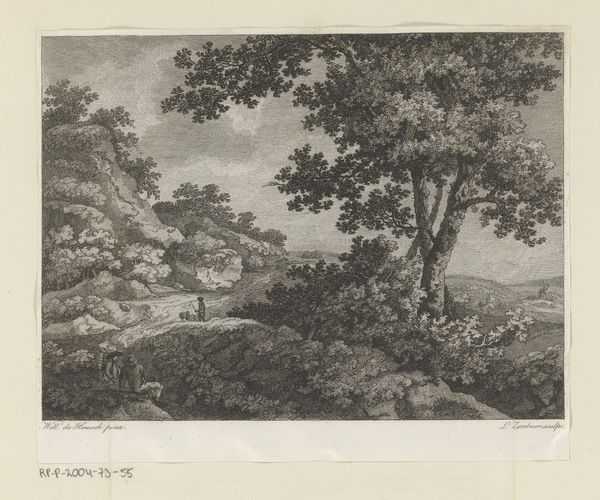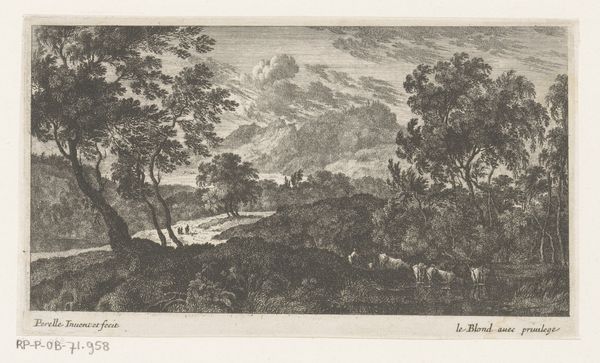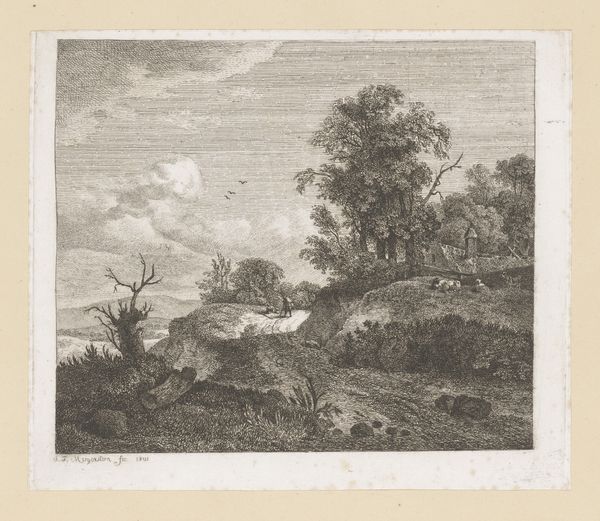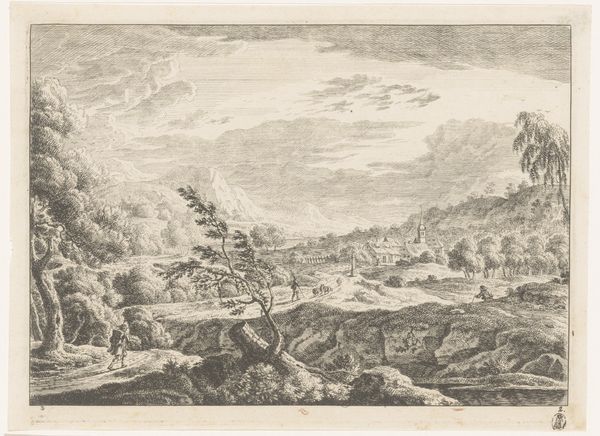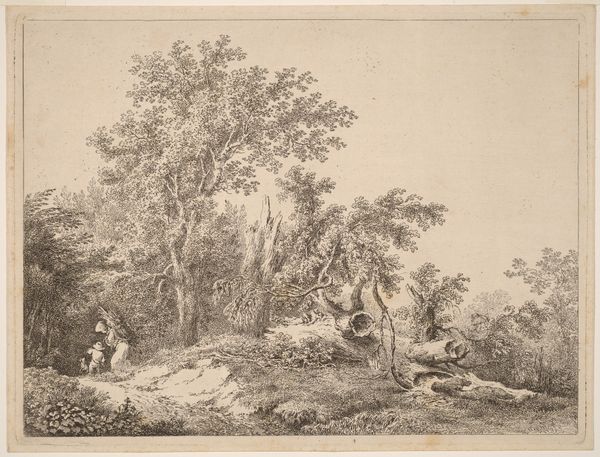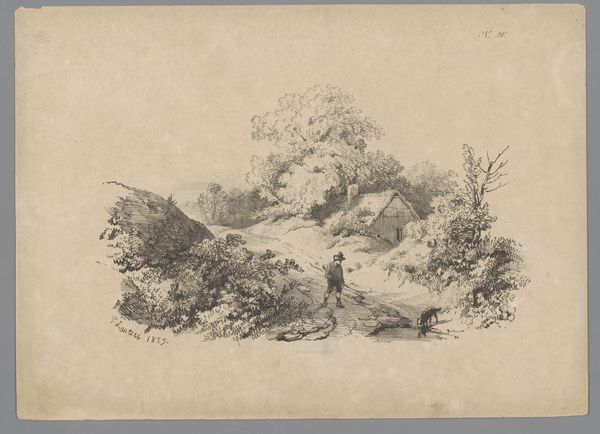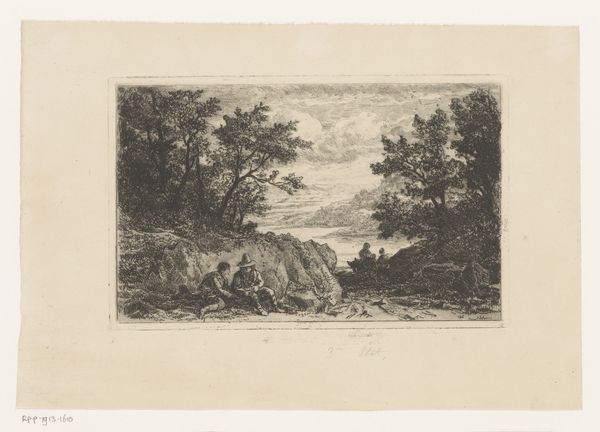
print, woodcut, wood-engraving
#
aged paper
#
toned paper
# print
#
old engraving style
#
landscape
#
woodcut
#
france
#
history-painting
#
wood-engraving
Dimensions: 6 1/4 x 9 3/8 in. (15.88 x 23.81 cm) (image)8 1/2 x 10 7/8 in. (21.59 x 27.62 cm) (sheet)
Copyright: Public Domain
Curator: Here we have a wood-engraving titled "Animaux antédiluviens à Sydenham," dating back to 1867. Editor: My first thought is: desolate. It has a sort of static, melancholic feel with those giant creatures listlessly occupying the landscape. The textures feel rough; the overall palette subdued. Curator: Indeed. The piece presents a scene of antediluvian animals, likely dinosaurs and other prehistoric creatures, set within a landscape intended to represent Sydenham. These depictions reflect 19th-century understanding and imagination of the prehistoric world. Editor: What I find fascinating is that 19th century audience's engagement with history through the lens of then-emerging science. How did they receive these interpretations of a lost world, especially as the field of paleontology was really starting to take shape? What sort of colonial undertones were at play when picturing nature in such raw and "untamed" forms? Curator: That's a keen insight. Popular science at the time often carried imperialistic views, portraying the natural world, including its prehistoric past, as something to be discovered, studied, and, in some ways, conquered. These images played a role in shaping the public’s perception and fascination with a world untouched by modernity, reinforcing a narrative of progress and human dominance. Editor: And thinking about the medium of a wood-engraving, which lends itself to mass production and distribution, these ideas were further ingrained in the public consciousness. It raises questions about authenticity versus representation. How accurate were these portrayals, and more importantly, who benefitted from defining them? What underlying political narratives did this reflect? Curator: Precisely. The dissemination of these images would inevitably impact ideas of scientific validity and truth. It's a complex interplay of scientific pursuit, colonial ideology, and artistic interpretation shaping how we perceive our place in the grand narrative of time. Editor: Right. It’s crucial to consider art in tandem with other cultural texts, from scientific studies to fiction. And how visual representations are laden with meaning and have concrete political repercussions. It really forces us to reflect on the social construction of knowledge and how that plays out in our understanding of nature, both past and present. Curator: Ultimately, engaging with an artwork like this enables us to look at the past and, also, at ourselves and how we are actively creating histories, reinforcing or shifting cultural power dynamics every day.
Comments
No comments
Be the first to comment and join the conversation on the ultimate creative platform.
